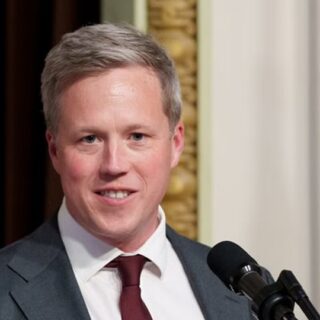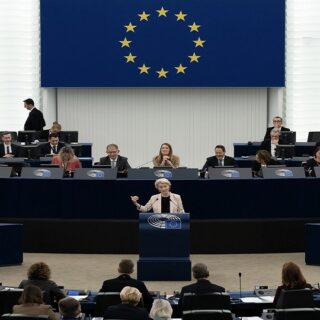
The tumultuous eight months between the February and October Revolutions of 1917 witnessed many types of violence, but terrorism and even state violence were not among them.
Instead, the lands of the former Russian Empire were rocked by many incidents of mass violence from below.
Politically motivated killings often happened during 1917, but political parties and movements generally did not conduct terrorist acts. Participants in mass protest movements often committed politically motivated killings between the February and October Revolutions.
Criminal violence also skyrocketed because of the collapse of order. The factors that allowed the development of mass terrorism, particularly from 1901-1911, simply did not exist once the tsarist government was overthrown in the February Revolution.
The Provisional Government that emerged from the February Revolution granted virtually complete political freedom to the population. Forcing the tsarist government to grant concessions such as a constitution, political freedom, and a parliament had been one of the official goals of terrorists, particularly of the People’s Will and the Party of Socialists-Revolutionaries (SRs).
The Provisional Government also abolished the police and old bureaucratic structure whose members had often been targets of terrorist attacks by all leftist parties and movements. As well, the new government promised the convocation of a Constituent Assembly to write a constitution and eventually it allowed all men and women 20 years and over to vote.
SRs and Mensheviks entered a coalition cabinet of the Provisional Government at the end of April. The Provisional Government could not become the object of terrorist attacks because it was not the same as the autocracy overthrown in the February Revolution. Even anarchists, who regarded the Provisional Government as just one more government to be destroyed, did not conduct terrorist acts.
The speedy collapse of the Russian state and society was a virtually logical result of the overthrow of Tsar Nicholas II. This collapse created virtually ideal conditions for skyrocketing rates of violence of mass protest movements along with criminal violence.
The numerous revolutions and civil wars between 1917-1922 drew the entire population of the former Russian Empire into the biggest overthrow of every type of authority and law in the 20th century and possibly in all Europe since 1789. As Orlando Figes noted: “the revolution of 1917 should really be conceived of as a general crisis of authority” (Figes, 1997, p. 359).
Historians have generally described events between the February and October Revolutions as a conflict of dual power — “двоевластие” — between the Provisional Government and the Petrograd Soviet (Council) of Workers’ and Soldiers’ Deputies which was finally resolved by the Bolsheviks seizing and declaring soviet rule.
Figes suggested that the Petrograd Soviet was as powerless in imposing its will on the whole country as was the Provisional Government and that the situation was really one of multi-power — “многовластие” (Figes, 1997, p. 359).
Central authority of both government and Petrograd Soviet was challenged and often overthrown on the regional, city, town, and even village level. The Provisional Government chose to abolish the bureaucracy and police with the result that committees on every possible level tried to organize daily life. The Soviet and its supporters also instituted committees on every level.
In other words, the tsarist regime was replaced by committee regimes. And committees were generally patterned on the circles — “кружки” — that had dominated political parties and movements for years before 1917 The over-emphasis upon circles — “кружковщина” — had ensured that all parties before 1917 — including the Bolsheviks — remained amorphous groupings and prone to splitting into numerous factions. Nor did the challenge to and overthrow of authority stop after the October Revolution.
Both the Council of People’s Commissars, run by the Bolsheviks, and the Bolsheviks’ rivals, including the White armies and numerous anti-Bolshevik governments, often were unable to deal with the numerous challenges to their authority especially in pivotal years like 1918.
Nicholas II was not the only person who lost his authority in 1917. As Figes noted: “There was a rejection not just of the state, but of all figures of authority; judges, policemen, Civil Servants, army and navy officers, priests, teachers, employers, foremen, landowners, village elders, patriarchal fathers, and husbands.” (Figes, 1997 p. 359).
While disintegration of state and society was a somewhat normative feature of European revolutions, especially during the first few years of the French Revolution, the disintegration was virtually total in Russia between the February and October Revolutions.
Terrorism was completely unnecessary during these eight months because the collapse of authority created ideal conditions for mass violence along with criminal violence
Sources Used:
- Figes, O. (1997) A People’s Tragedy: the Russian Revolution, 1891-1924. New York: Viking.





